Caroline Lowbridge
BBC News, East Midlands
Reporting fromCastleton and Mam Tor

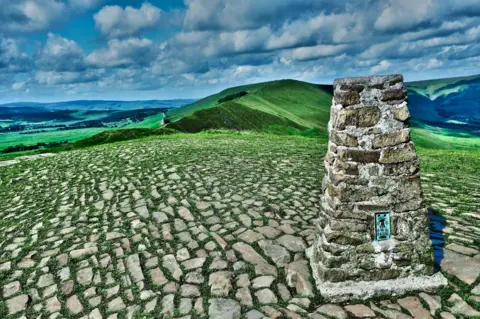 Getty Images
Getty Images
Of all of the hills to choose from in the Peak District, Mam Tor has become strangely popular in recent years. But why is this happening – and what effect is it having?
Ed Procter has a clear view of Mam Tor from the back garden of his home in Castleton.
“I can come down here in the morning, have a cup of coffee and see hundreds of people up on top,” he says.
“I’m still wiping the sleep from my eye, and we can see them walking up and watching the sunrise.”
Ed has lived in the Hope Valley area of Derbyshire since 2012 and says Mam Tor wasn’t as popular then.
However, it’s now so popular that walkers have caused significant erosion in some areas, and helicopters are being used to fly up soil for repairs.

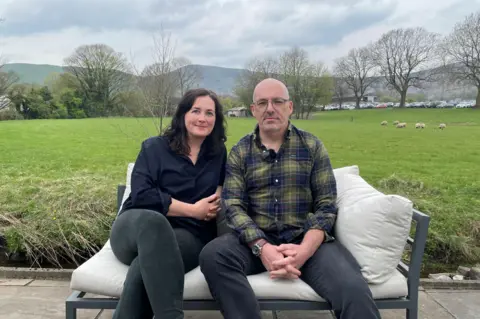
Data from market research firm Mintel suggests that hiking jumped in popularity during the Covid pandemic, but Mam Tor has become a particularly sought-after destination, even compared to other places in the Peak District.
Ed thinks it’s good that more people want to get outside, but there are downsides – aside from erosion damage – to the boom being concentrated in one area.
He’s part of a group called Concerned for Castleton, which was set up a year ago to collate information and share it with local authorities.
Reported problems include roads being blocked by inconsiderate and illegal parking, vast amounts of litter, and people emptying their campervan toilets into bushes.
“I’ve come across human poo before,” Ed says.
“There’s a lot of volunteers in the village that go litter picking every week and they come back with bags full of litter that has just been discarded by random people.
“One of the biggest frustrations I find when I litter pick is people leaving their dog poo bags – I just can’t understand that at all.”

 Supplied
Supplied
So why has Mam Tor become so popular, when there are loads of areas to explore in the Peak District?
A flick through walking books doesn’t mark it out as being especially noteworthy, and some seasoned hikers regard it as being a bit underwhelming.
However, Mam Tor’s location makes it easy to reach from Manchester and Sheffield. Nearby Castleton – which has plenty of pubs, cafes and shops – also means visitors can make a day of it.
There’s a car park close to the summit, meaning visitors can walk up the paved footpath in about 15 minutes.

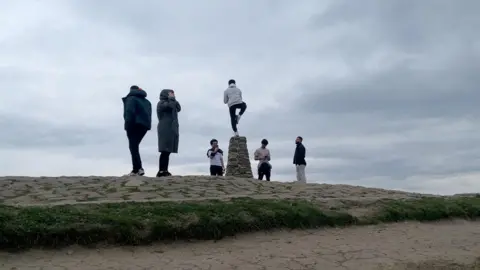
It’s also an accessible place to watch the sunrise without having to hike up a treacherous route in the dark, which has made it popular with TikTokers.
“Places like Mam Tor are featuring really heavily or prominently on TikTok and Instagram, and that is an advert really for people to come and visit these places,” says Craig Best, general manager for the National Trust’s Peak District portfolio, which includes Mam Tor.
“We are seeing huge volumes of people arriving, really early morning, before sunrise, and those high volumes of people are continuing throughout the day into the evening.”


Dozens of families with young children walk past as Craig stands a short way up from Mam Nick car park.
He says visitors initially started to increase during the pandemic.
“All of a sudden, loads of people from across society discovered the great outdoors because a lot of places were closed,” he says.
The National Trust installed people counters on Mam Tor just over a year ago.
“We know now, with evidence, that almost a million people are walking up Mam Tor every year, which is incredible,” says Craig.
“We’ve not seen levels of visitors like that ever, or as far as we’re aware.”
The popularity of Mam Tor is evident from Mountain Rescue data too. There were 77 callouts in 2024 – the highest number out of anywhere in the Peak District.
To put this into context, there were only 50 callouts to Kinder Scout, which is the highest point in the Peak District and much more challenging to hike.

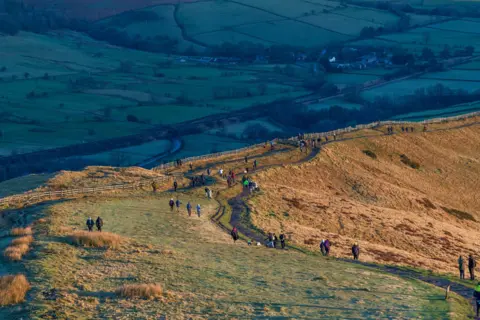
While the National Trust aims to encourage more people to experience heritage and nature, Craig admits there are downsides.
“We’re seeing big issues around litter, dog waste, food containers just being left throughout the outdoors, which is obviously having a massive impact on nature,” he says.
“We are seeing people parking inappropriately… to the extent that the police are now having to close roads, which is clearly having a massive impact on local people.”
The organisation is also having to do restoration work to repair erosion caused by high footfall.
“So just up on the hill there, we’ve got a hill fort, which is an incredibly important archaeological feature,” Craig says.
“People are walking off footpaths and they’re damaging the heritage features.”

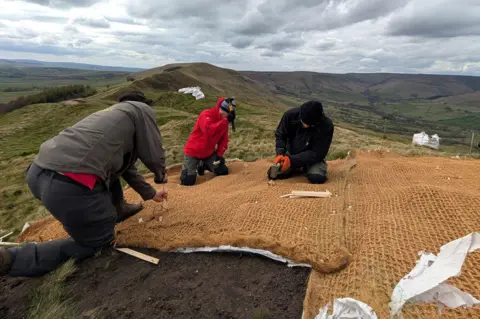 National Trust
National Trust
Concerns are so high that the National Trust is currently working with the Peak District National Park Authority, Derbyshire County Council, Derbyshire Police and High Peak MP Jon Pearce, to come up with a plan to reduce the impact of visitors.
Craig believes car park capacity needs to be increased, and physical measures need to be put in place on the side of roads to prevent people from parking in dangerous places.
He also says people should be encouraged to park appropriately via social media channels – or just go somewhere else if Mam Tor is busy.
“Have a back-up plan, think about where else you may want to visit in the Peak District,” he says.
“There are lots of places across the Peak District where you can visit and still have a great walk.”
Back in Castleton, I struggle to find a parking space myself, until I spot a sign that directs me to Holmesfield Farm, where the owners have been running a pop-up car park.
“We get a lot of regulars wanting to come,” says Jo Bradley, who owns the farm with her parents.
“They know where they can park and they haven’t got to ride round the village.”
But Jo is only allowed to open the field as a car park for 60 days a year.
“What we would really like is more days, not just your 60 days,” she says.
“I’m sure it would help the village a lot more. There are some that don’t like paying, they park on the roads, but we’re open, we’re here.”

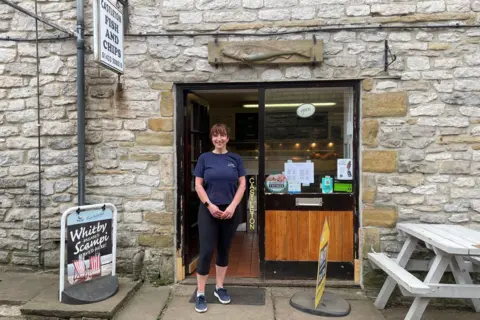
While businesses in Castleton are profiting from high visitor numbers, parking is causing problems for them too.
“Within the last six months, we’ve had 20% of our waste collections being unsuccessful, and we’ve been charged for that,” says Rachel Holloway, who runs Castleton Fish and Chips with her husband Martin Sutton.
“And when we’ve challenged it, the company have sent us photos of where they’ve been unable to get to us because of the inconsiderate parking.”
She said delivery drivers also experienced “grave difficulties and quite a lot of verbal abuse when they’re trying to reverse up in very tight spaces”.

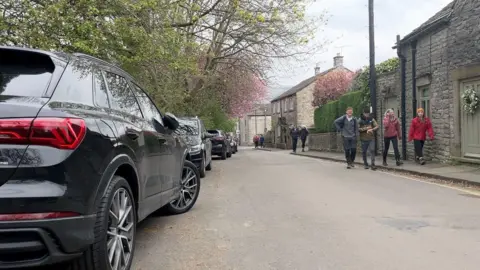

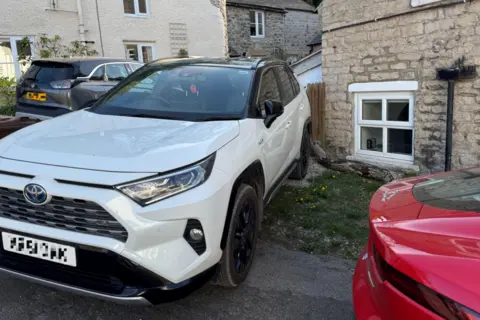 Andrew Denny
Andrew Denny
Rachel believes there isn’t enough parking for the amount of visitors Castleton is now attracting.
“Some people are parking in a way that isn’t safe, for example within the last couple of months the police have had to come out and ticket, and remove some vehicles that were causing emergency services vehicles to get blocked,” she says.
She believes pop-up car parks are a good idea, but would like public transport to improve too.
“It would be great to have more integrated public transport to enable people to come from the local train stations of Hope and Edale with easier bus access, more reliable bus access, and that would help people to enjoy the valley in a more sustainable way,” she says.

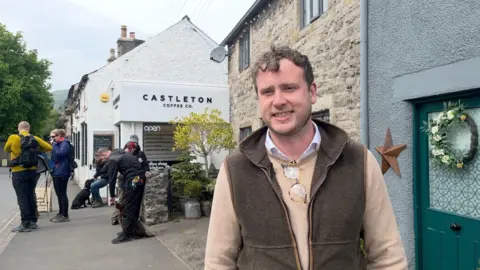
Lawrence Key says he can see the issue from multiple points of view – because he runs businesses in Castleton but has also lived here for 12 years.
“Tourism is great, it’s what keeps this village alive; it’s the reason I get to live in a village of this size with seven pubs,” says Lawrence, standing outside Castleton Coffee Co.
“It’s just that tourism needs to be sustainable and managed in a way that there will still be a community here.”
Most of his staff – both at the coffee shop and nearby Peveril Stores & Bakery – live locally so they don’t need to drive to work.
However, Lawrence believes more parking spaces need to be found for visitors.
“I think one of the major problems is simply the size of the village and the amount of people that come to it,” he says.
“It’s like building a theme park for 10,000 people and 30,000 turning up. There’s naturally going to be problems with that.
“It’s not a sleepy village of a couple of thousand people that just live and work here any more.”







